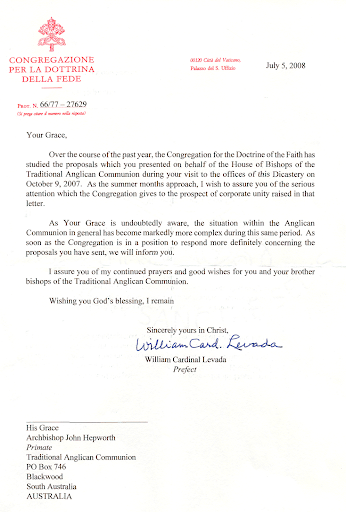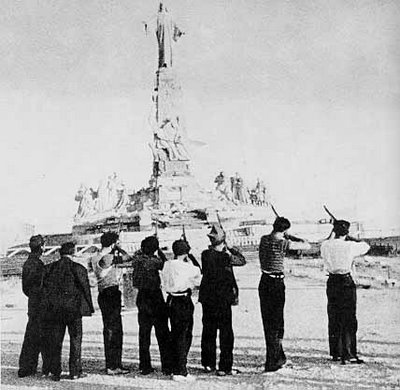 In the Pastoral Constitution on the Church in the Modern World, Gaudium et Spes, the Second Vatican Council was already addressing scientists, urging them to join forces to achieve unity in knowledge and a consolidated certainty on the conditions that can favour "the proper regulation of births" (n. 52). My Predecessor of venerable memory, the Servant of God Paul VI, published his Encyclical Letter Humanae Vitae on 25 July 1968.
In the Pastoral Constitution on the Church in the Modern World, Gaudium et Spes, the Second Vatican Council was already addressing scientists, urging them to join forces to achieve unity in knowledge and a consolidated certainty on the conditions that can favour "the proper regulation of births" (n. 52). My Predecessor of venerable memory, the Servant of God Paul VI, published his Encyclical Letter Humanae Vitae on 25 July 1968.The Document very soon became a sign of contradiction. Drafted to treat a difficult situation, it constitutes a significant show of courage in reasserting the continuity of the Church's doctrine and tradition. This text, all too often misunderstood and misinterpreted, also sparked much discussion because it was published at the beginning of profound contestations that marked the lives of entire generations.
Forty years after its publication this teaching not only expresses its unchanged truth but also reveals the farsightedness with which the problem is treated. In fact, conjugal love is described within a global process that does not stop at the division between soul and body and is not subjected to mere sentiment, often transient and precarious, but rather takes charge of the person's unity and the total sharing of the spouses who, in their reciprocal acceptance, offer themselves in a promise of faithful and exclusive love that flows from a genuine choice of freedom. How can such love remain closed to the gift of life? Life is always a precious gift; every time we witness its beginnings we see the power of the creative action of God who trusts man and thus calls him to build the future with the strength of hope.
The Magisterium of the Church cannot be exonerated from reflecting in an ever new and deeper way on the fundamental principles that concern marriage and procreation. What was true yesterday is true also today. The truth expressed in Humanae Vitae does not change; on the contrary, precisely in the light of the new scientific discoveries, its teaching becomes more timely and elicits reflection on the intrinsic value it possesses. The key word to enter coherently into its content remains "love".
As I wrote in my first Encyclical Deus Caritas Est: "Man is truly himself when his body and soul are intimately united.... Yet it is neither the spirit alone nor the body alone that loves: it is man, the person, a unified creature composed of body and soul, who loves" (n. 5). If this unity is removed, the value of the person is lost and there is a serious risk of considering the body a commodity that can be bought or sold (cf. ibid). In a culture subjected to the prevalence of "having' over "being', human life risks losing its value. If the practice of sexuality becomes a drug that seeks to enslave one's partner to one's own desires and interests, without respecting the cycle of the beloved, then what must be defended is no longer solely the true concept of love but in the first place the dignity of the person. As believers, we could never let the domination of technology invalidate the quality of love and the sacredness of life.
It was not by chance that Jesus, in speaking of human love, alluded to what God created at the beginning of the Creation (cf. Mt 19: 4-6). His teaching refers to a free act with which the Creator not only meant to express the riches of his love which is open, giving itself to all, but he also wanted to impress upon it a paradigm in accordance with which humanity's action must be declined. In the fruitfulness of conjugal love, the man and the woman share in the Father's creative act and make it clear that at the origin of their spousal life they pronounce a genuine "yes" which is truly lived in reciprocity, remaining ever open to life. This word of the Lord with its profound truth endures unchanged and cannot be abolished by the different theories that have succeeded one another in the course of the years, and at times even been contradictory.
Natural law, which is at the root of the recognition of true equality between persons and peoples, deserves to be recognized as the source that inspires the relationship between the spouses in their responsibility for begetting new children. The transmission of life is inscribed in nature and its laws stand as an unwritten norm to which all must refer. Any attempt to turn one's gaze away from this principle is in itself barren and does not produce a future.
We urgently need to rediscover a new covenant that has always been fruitful when it has been respected; it puts reason and love first. A perceptive teacher like William of Saint-Thierry could write words that we feel are profoundly valid even for our time: "If reason instructs love and love illumines reason, if reason is converted into love and love consents to be held within the bounds of reason, they can do something great" (De Natura et dignitate amoris, 21, 8). What is this "something great" that we can witness? It is the promotion of responsibility for life which brings to fruition the gift that each one makes of him or herself to the other. It is the fruit of a love that can think and choose in complete freedom, without letting itself be conditioned unduly by the possible sacrifice requested. From this comes the miracle of life that parents experience in themselves, as they sense the extraordinary nature of what takes place in them and through them. No mechanical technique can substitute the act of love that husband and wife exchange as the sign of a greater mystery which (as protagonists and sharers in creation) sees them playing the lead and sharing in creation.
Unfortunately, more and more often we see sorrowful events that involve adolescents, whose reactions show their incorrect knowledge of the mystery of life and of the risky implications of their actions. The urgent need for education to which I often refer, primarily concerns the theme of life. I sincerely hope that young people in particular will be given very special attention so that they may learn the true meaning of love and prepare for it with an appropriate education in sexuality, without letting themselves be distracted by ephemeral messages that prevent them from reaching the essence of the truth at stake. To circulate false illusions in the context of love or to deceive people concerning the genuine responsibilities that they are called to assume with the exercise of their own sexuality does not do honor to a society based on the principles of freedom and democracy. Freedom must be conjugated with truth and responsibility with the force of dedication to the other, even with sacrifice; without these components the human community does not grow and the risk of enclosing itself in an asphyxiating cycle of selfishness is always present.
The teaching expressed by the Encyclical Humanae Vitae is not easy. Yet it conforms with the fundamental structure through which life has always been transmitted since the world's creation, with respect for nature and in conformity with its needs. Concern for human life and safeguarding the person's dignity require us not to leave anything untried so that all may be involved in the genuine truth of responsible conjugal love in full adherence to the law engraved on the heart of every person.




















































